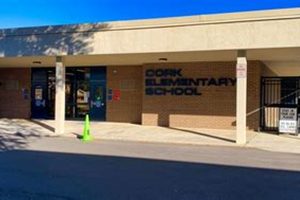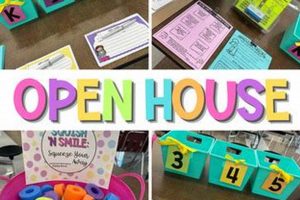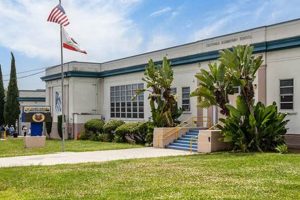An integrated approach to learning, encompassing science, technology, engineering, arts, and mathematics, seeks to provide young learners with hands-on, inquiry-based experiences. This pedagogical model encourages problem-solving, critical thinking, and creativity through interdisciplinary projects and activities, often incorporating real-world applications. For example, students might design and build a bridge using specific materials while exploring concepts of physics and engineering, documenting their process through writing and visual arts.
Cultivating these skills from an early age is crucial for developing a well-rounded, adaptable workforce prepared for future challenges. Such an interdisciplinary approach fosters innovation, collaboration, and communication skills, essential for success in a rapidly evolving technological landscape. Historically, educational approaches have often compartmentalized these disciplines. The integrated framework represents a shift toward a more holistic and interconnected understanding of knowledge, recognizing the synergistic relationships between these fields.
The following sections delve into specific examples of implementation, addressing practical considerations for educators and exploring the impact of this educational approach on student learning outcomes. Further discussion will also analyze the role of assessment in evaluating the effectiveness of such programs and explore the potential challenges and future directions.
Tips for Implementing Integrated STEM/Arts Education
Effective implementation requires careful planning and consideration of several key factors. The following tips offer guidance for educators seeking to integrate this interdisciplinary approach in elementary classrooms.
Tip 1: Start Small and Focus on Integration: Begin with a single project that connects two or three disciplines. For example, a unit on plant life cycles could incorporate science observations, mathematical data collection, and artistic representations of growth stages.
Tip 2: Hands-on Activities are Crucial: Learning should be experiential. Provide opportunities for students to experiment, build, and create. Building simple machines or designing and constructing miniature ecosystems are excellent examples.
Tip 3: Encourage Collaboration and Communication: Group projects foster teamwork and communication skills. Students learn to share ideas, negotiate, and problem-solve collectively.
Tip 4: Connect Learning to Real-World Applications: Demonstrate the relevance of concepts by linking them to real-world scenarios. Exploring the principles of flight through building paper airplanes or examining local water quality provides practical context.
Tip 5: Incorporate Arts and Design Thinking: Encourage creativity and innovation by integrating artistic expression and design thinking. Students might design and build a model city, considering aesthetics and functionality.
Tip 6: Utilize Available Resources: Leverage online resources, local experts, and community partnerships to enhance learning experiences. Museums, science centers, and local businesses can provide valuable support.
Tip 7: Assessment Should Be Authentic and Ongoing: Evaluate student learning through observations, project presentations, and portfolios. Focus on assessing the process of learning as well as the final product.
By incorporating these tips, educators can create engaging and enriching learning experiences that cultivate essential skills for future success. The integrated approach empowers students to become innovative thinkers, problem-solvers, and collaborators.
In conclusion, the adoption of interdisciplinary learning represents a significant advancement in elementary education, equipping students with the tools and knowledge necessary to thrive in a complex and dynamic world.
1. Integrated Learning
Integrated learning serves as a cornerstone of a successful STEAM curriculum for elementary school. It transcends traditional subject boundaries, connecting disciplines like science, technology, engineering, arts, and mathematics to create a cohesive learning experience. This interconnectedness allows students to grasp the synergistic relationships between different fields of knowledge, fostering a deeper understanding of how concepts apply in real-world contexts. For example, a lesson on renewable energy might involve scientific exploration of solar power, the technological design of solar panels, the engineering of sustainable structures, mathematical calculations of energy efficiency, and artistic representation of environmental impact. This interdisciplinary approach facilitates a more holistic and meaningful learning experience, moving beyond rote memorization towards application and innovation.
The importance of integrated learning within a STEAM curriculum lies in its ability to cultivate essential 21st-century skills. By engaging with multifaceted projects, students develop critical thinking, problem-solving, collaboration, and communication skills. For instance, designing and building a miniature robot requires students to integrate knowledge of mechanics, electronics, and programming while working collaboratively to troubleshoot and refine their designs. This process fosters creative problem-solving, adaptability, and a deeper understanding of complex systems. Furthermore, integrated learning promotes engagement and motivation by presenting relevant and interconnected challenges that resonate with students’ natural curiosity.
In summary, integrated learning is not merely a pedagogical approach; it is a fundamental shift in how knowledge is acquired and applied. Within a STEAM curriculum, it empowers elementary students to become active learners, critical thinkers, and innovative problem-solvers, preparing them for the complexities of a rapidly evolving world. Successfully implementing integrated learning requires careful curriculum design, ongoing teacher professional development, and access to appropriate resources. Addressing these challenges is crucial for realizing the full potential of STEAM education and ensuring that all students have the opportunity to thrive in the 21st century.
2. Hands-on Activities
Hands-on activities constitute a critical component of successful STEAM education at the elementary level. They transform abstract concepts into tangible experiences, bridging the gap between theoretical knowledge and practical application. This active learning approach fosters deeper understanding and retention by engaging multiple senses and encouraging direct interaction with materials and concepts. The kinesthetic nature of these activities caters to diverse learning styles and allows students to explore, experiment, and discover at their own pace. For example, constructing a simple circuit illuminates the principles of electricity more effectively than reading a textbook definition. Building a model bridge demonstrates the practical application of physics and engineering concepts, providing a tangible understanding of load-bearing structures and material properties. Designing and coding a simple game introduces fundamental programming logic and problem-solving strategies in an engaging and interactive manner.
The effectiveness of hands-on activities in STEAM education stems from their ability to foster crucial skills beyond disciplinary knowledge. These activities inherently promote problem-solving as students encounter challenges and devise solutions through experimentation and iteration. Collaboration and communication are naturally integrated as students work together on projects, sharing ideas, and negotiating different approaches. Furthermore, these experiences nurture creativity and innovation by providing opportunities for students to design, build, and test their own creations. This process encourages exploration, risk-taking, and a growth mindset, essential for future success in a rapidly evolving technological landscape. For instance, designing and building a Rube Goldberg machine requires students to apply creative problem-solving skills, collaborate effectively, and iterate their designs to achieve a desired outcome. Similarly, constructing and programming a robot to navigate a maze encourages critical thinking, logical reasoning, and adaptability in the face of challenges.
In summary, hands-on activities are not merely supplementary elements but rather fundamental building blocks of effective STEAM curricula. They provide a pathway for deeper learning, skill development, and increased engagement, ultimately preparing students for the challenges and opportunities of the 21st century. Integrating these activities effectively requires careful planning, resource allocation, and ongoing teacher professional development. Addressing these practical considerations ensures that all students have the opportunity to benefit from the transformative power of hands-on learning within a STEAM framework.
3. Problem-solving focus
A problem-solving focus forms an integral part of a robust STEAM curriculum for elementary school. It cultivates essential cognitive skills that extend beyond disciplinary boundaries, equipping students with the ability to analyze challenges, devise solutions, and evaluate outcomes effectively. Within a STEAM framework, problem-solving becomes the driving force behind inquiry-based learning, prompting students to actively engage with complex concepts and develop critical thinking abilities. This emphasis moves beyond rote memorization and encourages a deeper understanding of underlying principles through exploration and experimentation. For example, when tasked with designing a device to protect an egg from a high fall, students must apply physics principles, engineering design processes, and iterative testing to arrive at a successful solution. This process inherently fosters analytical thinking, adaptability, and resilience qualities crucial for success in a complex and ever-evolving world.
The practical significance of this problem-solving focus extends beyond the classroom, preparing students for real-world challenges and future careers. STEAM fields often demand innovative solutions to complex problems, requiring individuals capable of critical analysis, creative thinking, and collaborative problem-solving. By embedding a problem-solving focus within the elementary curriculum, educators equip students with these essential skills from an early age, fostering a mindset of inquiry and innovation. Furthermore, the iterative nature of problem-solving in STEAM activities reinforces the importance of persistence, adaptability, and learning from mistakes. For instance, a challenge to design a more efficient irrigation system for a school garden encourages students to research water conservation techniques, explore different engineering designs, and test their prototypes in real-world conditions. This process not only solidifies their understanding of scientific and engineering principles but also cultivates valuable problem-solving strategies applicable to diverse situations.
In summary, prioritizing a problem-solving focus within a STEAM curriculum for elementary school is crucial for developing well-rounded individuals equipped to navigate the complexities of the 21st century. This emphasis on analytical thinking, creative problem-solving, and iterative design processes not only enhances understanding of core STEAM concepts but also cultivates essential skills transferable to a wide range of academic, professional, and personal pursuits. Successfully implementing this approach requires educators to create engaging, open-ended challenges, provide ample opportunities for experimentation and collaboration, and foster a learning environment that values persistence and embraces failure as a learning opportunity. The long-term benefits of this investment extend far beyond the elementary years, empowering students to become innovative thinkers, effective problem-solvers, and active contributors to society.
4. Creativity and innovation
Creativity and innovation represent essential components of a robust STEAM curriculum for elementary school. These skills are not merely desirable additions but rather fundamental drivers of progress and problem-solving within STEAM fields. A STEAM curriculum that prioritizes creativity and innovation empowers students to think divergently, explore unconventional solutions, and develop novel approaches to challenges. This focus moves beyond rote application of existing knowledge and encourages students to generate new ideas, experiment with different possibilities, and embrace risk-taking as part of the learning process. For instance, a challenge to design a sustainable playground encourages students to consider various materials, energy sources, and community needs, fostering creative thinking and innovative design solutions. Similarly, exploring musical composition through digital audio workstations allows students to experiment with sound, melody, and rhythm, fostering creativity and innovation within the artistic realm.
The practical significance of fostering creativity and innovation within STEAM education extends beyond the classroom walls. These skills are increasingly valued in the modern workforce, where adaptability, problem-solving, and the ability to generate novel ideas are highly sought after. By cultivating these skills from an early age, educators prepare students for future success in a rapidly evolving technological landscape. Furthermore, creativity and innovation are intrinsically linked to a growth mindset, encouraging students to embrace challenges, persist through setbacks, and view failure as a learning opportunity. This resilience and adaptability are crucial not only for professional success but also for personal growth and well-being. For example, engaging students in open-ended engineering design challenges, such as building a self-sustaining ecosystem or designing a prosthetic limb, fosters creativity, problem-solving, and resilience in the face of unforeseen obstacles.
In conclusion, integrating creativity and innovation into STEAM curricula for elementary school is not merely about fostering artistic expression or inventive thinking; it is about equipping students with essential skills for navigating the complexities of the 21st century. By providing opportunities for exploration, experimentation, and open-ended problem-solving, educators cultivate a generation of adaptable, innovative thinkers prepared to address future challenges and contribute meaningfully to society. Successfully fostering creativity and innovation requires a supportive learning environment that values risk-taking, celebrates diverse perspectives, and encourages students to push the boundaries of their own potential. This emphasis on creativity and innovation within STEAM education ultimately empowers students to become not only skilled problem-solvers but also imaginative creators and impactful innovators.
5. Real-world connections
Real-world connections are essential for effective STEAM curricula in elementary school. These connections bridge the gap between abstract concepts and practical applications, demonstrating the relevance of STEAM subjects to students’ lives and the world around them. This relevance fosters engagement, deepens understanding, and motivates further exploration. By grounding STEAM learning in real-world contexts, educators empower students to see themselves as active participants in a world shaped by science, technology, engineering, arts, and mathematics.
- Relevance and Engagement
Connecting STEAM concepts to real-world scenarios increases student engagement and motivation. When students understand the practical applications of their learning, they are more likely to invest time and effort in mastering the material. Examples include studying local ecosystems to understand environmental science, designing solutions for community challenges using engineering principles, or exploring the mathematics of financial literacy. This approach transforms abstract concepts into tangible experiences, fostering a deeper appreciation for the power and relevance of STEAM.
- Career Exploration
Real-world connections provide opportunities for early career exploration within STEAM fields. By showcasing the diverse applications of STEAM knowledge in various professions, educators can spark student interest in potential career paths. Guest speakers from STEAM-related industries, field trips to local businesses, and project-based learning activities that simulate real-world work environments can all contribute to broadening students’ understanding of STEAM career possibilities. This early exposure can plant the seeds for future career aspirations and equip students with the knowledge and skills necessary to pursue those paths.
- Critical Thinking and Problem-Solving
Real-world problems provide authentic contexts for developing critical thinking and problem-solving skills. Challenges such as designing a sustainable energy solution for the school or creating a device to assist individuals with disabilities require students to apply STEAM knowledge in a practical and meaningful way. These experiences foster analytical thinking, creativity, and collaboration as students work together to devise and implement solutions to complex problems. This approach prepares students to become active and engaged citizens capable of addressing real-world challenges using STEAM principles.
- Community Engagement and Social Impact
Connecting STEAM learning to community needs fosters a sense of social responsibility and empowers students to make a positive impact on their surroundings. Projects that address local environmental issues, community infrastructure needs, or public health concerns provide students with opportunities to apply their STEAM skills to benefit their community. This approach reinforces the value of STEAM education beyond the classroom and cultivates a sense of civic engagement, encouraging students to become active and responsible members of society.
These real-world connections transform STEAM education from a collection of isolated subjects into a dynamic and relevant learning experience. By grounding STEAM learning in practical applications and community contexts, educators empower students to become not just knowledgeable learners but also innovative problem-solvers and engaged citizens prepared to address the challenges and opportunities of the 21st century.
Frequently Asked Questions
This section addresses common inquiries regarding integrated STEAM education for elementary-aged students.
Question 1: How does a STEAM curriculum differ from traditional science and math instruction?
STEAM education integrates science, technology, engineering, arts, and mathematics into interconnected learning experiences, rather than treating them as separate subjects. This interdisciplinary approach emphasizes hands-on activities, problem-solving, and creative thinking.
Question 2: What are the benefits of implementing STEAM at the elementary level?
Early exposure to STEAM fosters critical thinking, problem-solving skills, creativity, collaboration, and innovation. These skills are crucial for success in a rapidly evolving technological landscape and prepare students for future careers in diverse fields.
Question 3: How can schools with limited resources effectively implement STEAM programs?
Effective STEAM education does not require expensive equipment. Leveraging readily available materials, community resources, and free online tools can provide rich learning experiences. Focus on open-ended projects and design challenges that encourage creative problem-solving with limited resources.
Question 4: How can educators with limited STEAM experience effectively teach these concepts?
Numerous professional development resources, online communities, and collaborative networks support educators in developing STEAM pedagogical skills. Focusing on inquiry-based learning and facilitating student-led exploration can be effective even with limited background knowledge in specific STEAM fields.
Question 5: How is student learning assessed in a STEAM curriculum?
Assessment in STEAM education often focuses on project-based learning, portfolios, and performance-based tasks. These methods evaluate not only content knowledge but also the application of skills such as problem-solving, critical thinking, communication, and collaboration.
Question 6: How can parents support their children’s STEAM learning at home?
Encouraging exploration, experimentation, and creative problem-solving in everyday activities can significantly support children’s STEAM development. Engaging in activities like building, coding, creating art, and exploring nature can foster a love of learning and a deeper understanding of STEAM concepts.
A well-implemented STEAM curriculum equips elementary students with essential skills and knowledge for future success. Addressing these common questions helps stakeholders understand the value and practicality of integrating STEAM education at the elementary level.
For further information, explore the resources and examples available in the following sections.
Conclusion
Exploration of STEAM curriculum for elementary school reveals its multifaceted nature and profound impact on student development. Integrating science, technology, engineering, arts, and mathematics fosters essential skills for the 21st century, including critical thinking, problem-solving, collaboration, creativity, and innovation. Hands-on, inquiry-based learning experiences cultivate a deeper understanding of these interconnected disciplines and their real-world applications. The problem-solving focus within STEAM education nurtures analytical thinking and adaptability, while the emphasis on creativity and innovation empowers students to generate novel solutions and contribute meaningfully to society. Connecting learning to real-world contexts enhances engagement, motivates exploration, and prepares students for future careers in diverse fields.
The transformative potential of STEAM education in elementary school necessitates ongoing commitment to effective implementation and continuous improvement. Investment in teacher professional development, access to resources, and fostering supportive learning environments are crucial for realizing the full benefits of STEAM education. Cultivating a generation of adaptable, innovative thinkers through STEAM education is an investment in a future where individuals are equipped to address complex challenges, contribute to advancements across disciplines, and shape a better world.







